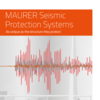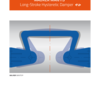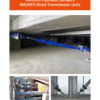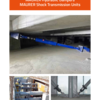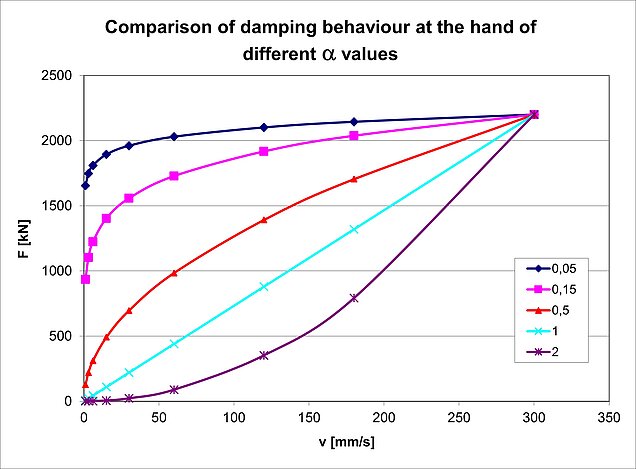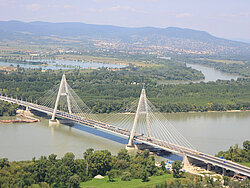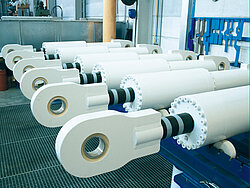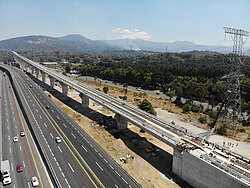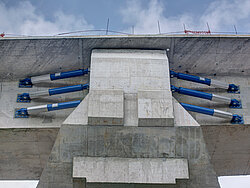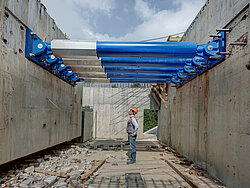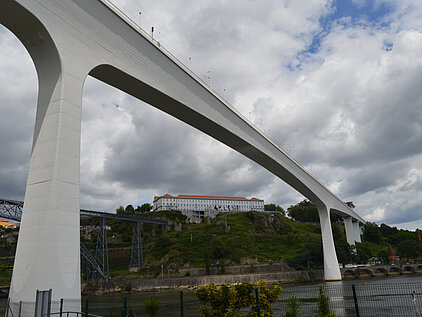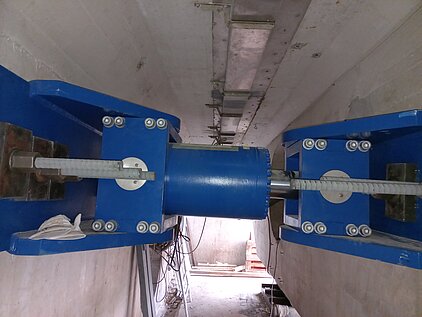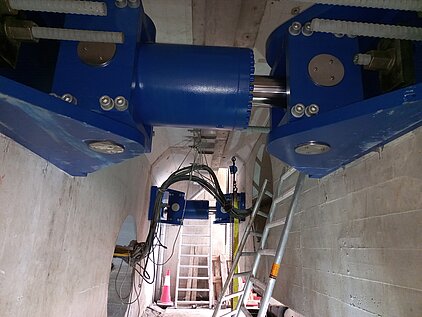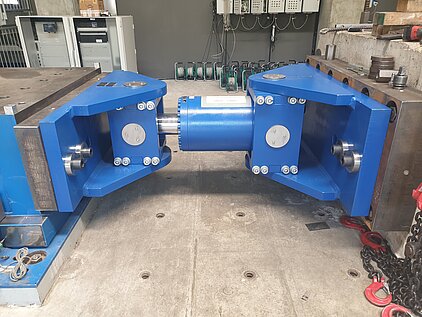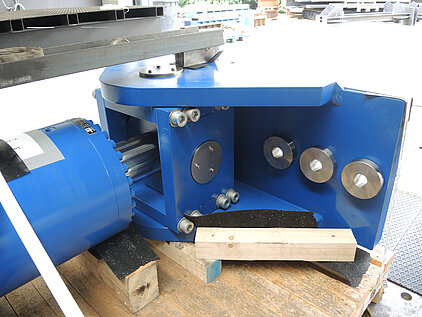Dampers
Dampers continuously transform energy introduced into the structure during the seismic event into heat. This prevents structural accelerations and displacements fromexceeded design limits and avoids damage. The damping property of different materials and fluids is utilized for this purpose. There is a choice of deformation and velocity dependent systems as well as adaptive systems.
Often dampers are used in addition to conventional or isolated structural in order to increase damping effectively and achieve restraint or at least obtain greater rigidity in service load cases.
MAURER hydraulic dampers: MHD
MAURER hysteresis dampers: MANTIS®
| MAURER dampers | MHD | MANTIS® |
| Specified in accordance with | EN 15129 or other | EN 15129 or other |
| Type of function | velocity-dependent | movement-dependent |
| Load capacities | < 10 MN | < 2 MN |
| Passively adaptive function | yes | yes |
| Displacement capacity service | ++++ | ++ |
| Displacement capacity seismic | ++++ | +++ |
| Energy absorption | ++++ | +++ |
| Working temperature | -50 to +80°C | -30 to +50°C |
| Size | medium | medium – large |
| Service life | > 50 years | > 50 years |
Hydraulic dampers - MHD
MAURER hydraulic dampers dissipate energy by compressing fluid through nozzles, slits or valves under high pressure. When an earthquake occurs, an optimised fluid flow system allows relative movement and, if required, restricts the response force to a defined maximum level. The velocity-dependent response force can be adjusted using any desired damping exponents (α = 0.04-2.0) to meet the specific structural requirements.
- Force limiting possible with a special valve system
- Very low resistance during thermal movement of less than 3% nominal response force
- No leakage due to a triple sealing system and pressure limiting system
- Hybrid solutions of fuse function or lock-up function and damping function possible
- Blocking function possible from 0.1-0.5 mm/s
- Rapid response force due to high internal fluid rigidity
- Regular maintenance not necessary in normal operation
- Operating temperature range: -50°C to +80°C
- Increasing fluid temperatures do not cause an increase in internal pressure.
- CE marking available
In the case of railway bridges, dampers can also take on the additional task of retaining the bridge during braking and acceleration processes. This requires a damping exponent in the range of 0.04 for fast and aggressive force output. As a result of this, there is only a small elastic compliance and a small drift occurring in the components, which is generally between 1 mm and 10 mm.
In the Del Las Piedras structure in Spain, dampers were combined with spherical bearings and flexible pillars, which reduced the construction costs by more than 10%.

